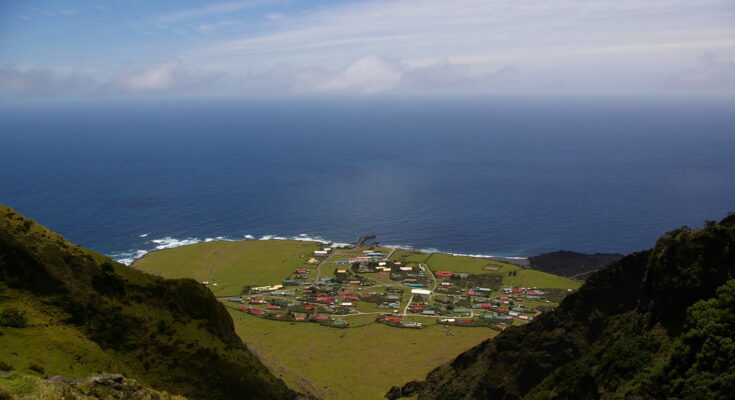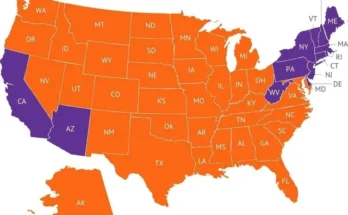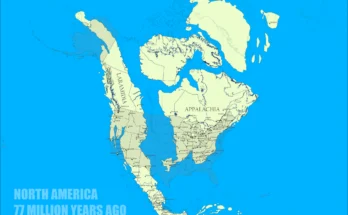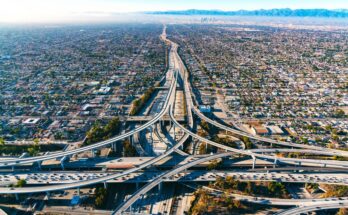Welcome to Tristan da Cunha, officially the most isolated inhabited area on Earth.

Tristan da Cunha is an archipelago of one inhabited and a few smaller uninhabited islands situated approximately 2,800 kilometers from South Africa and 3,300 kilometers from South America. The nearest inhabited town is 2,437 kilometers north of archipelago, on the famous island of St. Helena.
The islands are under UK rule, and there is only one settlement on them, the fabulous-sounding Edinburgh of the Seven Seas, where 242 people currently live. The island’s meticulously maintained website reveals that eight families live on the island, most of whom (63 people) are members of the Green family.
Tristan da Cunha, the most isolated island in the world, as seen from the International Space Station

It’s a perfect volcanic cone

The main attraction of the 98-square-kilometer main island is its isolation from the outside world, which is largely due to the fact that no airport has been built on the archipelago to this day. The island would be accessible from the UK by plane in less than half a day, but in the absence of a runway, only journey by boat is possible.
The only regular boat connection is from Cape Town, South Africa, from where the scheduled fishing reaches Tristan after about six days of tossing about on the high seas. This ship is the archipelago’s only regular connection to the outside world, so it is not surprising that information has been coming a bit slow to those who have lived here over the centuries. For example, the end of the First World War was not known to them until a British battle cruiser visited in 1919.
When everybody had to be evacuated

The place’s history didn’t always look that calm though. In 1961, for example, the island’s volcano started to erupt and the locals immediately knew they were in danger and had to flee as soon as possible. The 264 inhabitants of the island took to the boats and crossed the twenty miles that separated them from the uninhabited Inaccessible Island.
The next day, the Dutch merchant ship Tjisadane rescued the Tristanians and took them directly to Cape Town in South Africa. From there, the Tristanians were transferred to England, first to makeshift barracks and shortly thereafter to the former RAF airbase at Calshot, in southern England. Most residents saw things like an escalator or a double-decker bus for the first time! In the summer of 1963, however, 2 years after the eruption, all the inhabitants were back in their beloved Tristan da Cunha.
Why did all the islanders return immediately after the eruption was over? Some answers in this video from 25 years later
The volcanic archipelago was discovered in 1506 by Portuguese admiral Tristão da Cunha, who was on his way to the Cape of Good Hope. Although he could not land due to the stormy weather, the glory of discovery was definitely his (at least so he thought), so he named the largest island after himself. But since the Kingdom of Portugal did not show much interest in an island in the middle of nowhere, and were busy colonizing more valuable areas at that time, the archipelago fell into oblivion for long decades to come.
It wasn’t until 137 years later, when on February 7, 1643, the first indisputable landing took place by the crew of Heemstede, a ship of the Dutch East India Company. After the Dutch, it was mainly French traders and researchers who came to the islands and made the first more detailed maps of the archipelago and studied the species that lived there. Towards the end of the 18th century, an increasing number of American whaling and seal hunting boats turned up in the area, using the island as a kind of base. Later on, the British wanted to turn it into a prison island, but eventually found the island unsuitable for settlement.
But then came three American sailors who didn’t share the pessimism of the British and in December 1810 decided not to return to Boston but to live the rest of their lives on the island. Soon after another sailor joined them, and the four of them continued to live together. One of them, Jonathan Lambert from Massachusetts then declared himself the sole and sovereign owner of the islands and arbitrarily renamed Tristan da Cunha to the Islands of Refreshment (could he mean rum?). The new set-up did not last long, however, as in May 1812 three of the conquerors, including Lambert, drowned while fishing.
The political future of the island was finally determined by the British Empire. On August 14, 1816, King George III of Britain annexed Tristan da Cunha, and he sent in garrisons from South Africa. The British feared that the French might use the island to help Napoleon escape, who was exiled to St. Helena at the time. The fact that in the British-American war of 1812 the American warships used the island as a base also spoke in favor of taking possession.
Possessed, dispossessed and repossessed: This is the only settlement on the archipelago

In 1817, however, 55 people on the island lost their lives due to a shipwreck, which made the British realize that there was no point in stationing soldiers there. They decided to withdraw the entire garrison, except a Scottish corporal named William Glass, who had fallen in love with the place so much that he was allowed to stay there together with his family.
This marked the beginning of the island’s golden age, and in the years to come others joined the Glasses, including Thomas Swain from Hastings, England. When in the early 1820s, five bachelors asked a sailor captain if he could bring wives from St. Helena Island, a group of dark-skinned ladies also arrived in Tristan, after which the community began to grow further.
The Dutchman Peter Groen settled in 1836, and he then Englishized his name to Green. A year later, an American whaler, Thomas Rogers, found a new home here. Another American whaler, Andrew Hagan, arrived in Tristan in 1849. In the early 1850s, the island had a permanent population of about a hundred, with trade flourishing and the island becoming a permanent stopover for sailing ships to the Far East and Australia.
It doesn’t get much bigger, even if you get closer to it
Things changed by the second half of the 19th century and the community’s growth was halted due to several factors occurring at once: the decline of whaling, the transition to steamships, or the opening of the Suez Canal, which meant that less and less ships landed on the island. Many residents emigrated to the United States or Cape Town, and again, the island slowly sank into oblivion.
From 1875 a British warship delivered supplies to Tristan every year, so that island wouldn’t become depopulated completely. In 1892, a shipwreck enriched the community with Italian immigrants. The two surviving sailors of the sunken Italia ship, Andrea Repetto and Gaetano Laverello, decided to stay there and both married a local girl. Descendants of the two of them still live on the island.
These are the kind of cars you encounter on the main island

As for the island’s recent history: the winter of 1906 was particularly dry on the island, and since the pastures were also overgrazed, they became depleted. Nearly 400 cattle perished, and potato yields were also very poor. The British government offered the islanders evacuation in 1907, warning they could not promise further help in the future. The Tristaners voted to stay.
The most isolated period on the island occurred between 1909 and 1919, when the Admiralty completely stopped the annual supply ship voyage. According to reports, Tristan did not even receive mail for ten years, so those who stayed hardly had any information about the events of the First World War, for example. Except for the Battle of the Falklands in 1914, where the British won a great victory over the German East Asian Squadron, no other major military incident took place in this part of the southern hemisphere during the First World War. The British light cruiser HMS Yarmouth, ended up in Tristan only upon leaving Cape Town in July 1919, bringing the news of a truce.
Locals waiting… well, probably for a boat. Or more precisely, the boat.

Tristan da Cunha is very special in terms of its economy and social organization: The island is like a large cooperative. Inhabitants all have the same number of cattle and the farmland is communal. People, apart from being farmers, work in the lobster factory (rebuilt after the 1961 eruption, and again after a fire a couple of years ago) or in public administration. This way, no one has more possessions than the other, and all is done to avoid an excess of cattle depleting the pastures of Tristán da Cunha.
In addition, it must be noted that the island is completely self-sufficient, unlike, for example, St. Helena. The lobster factory has an exclusive contract to supply product to the Japanese market and this source of income, along with the sale of local stamps (which are very rare and sought after by collectors), appear to be enough for the locals to make a rather decent living.



